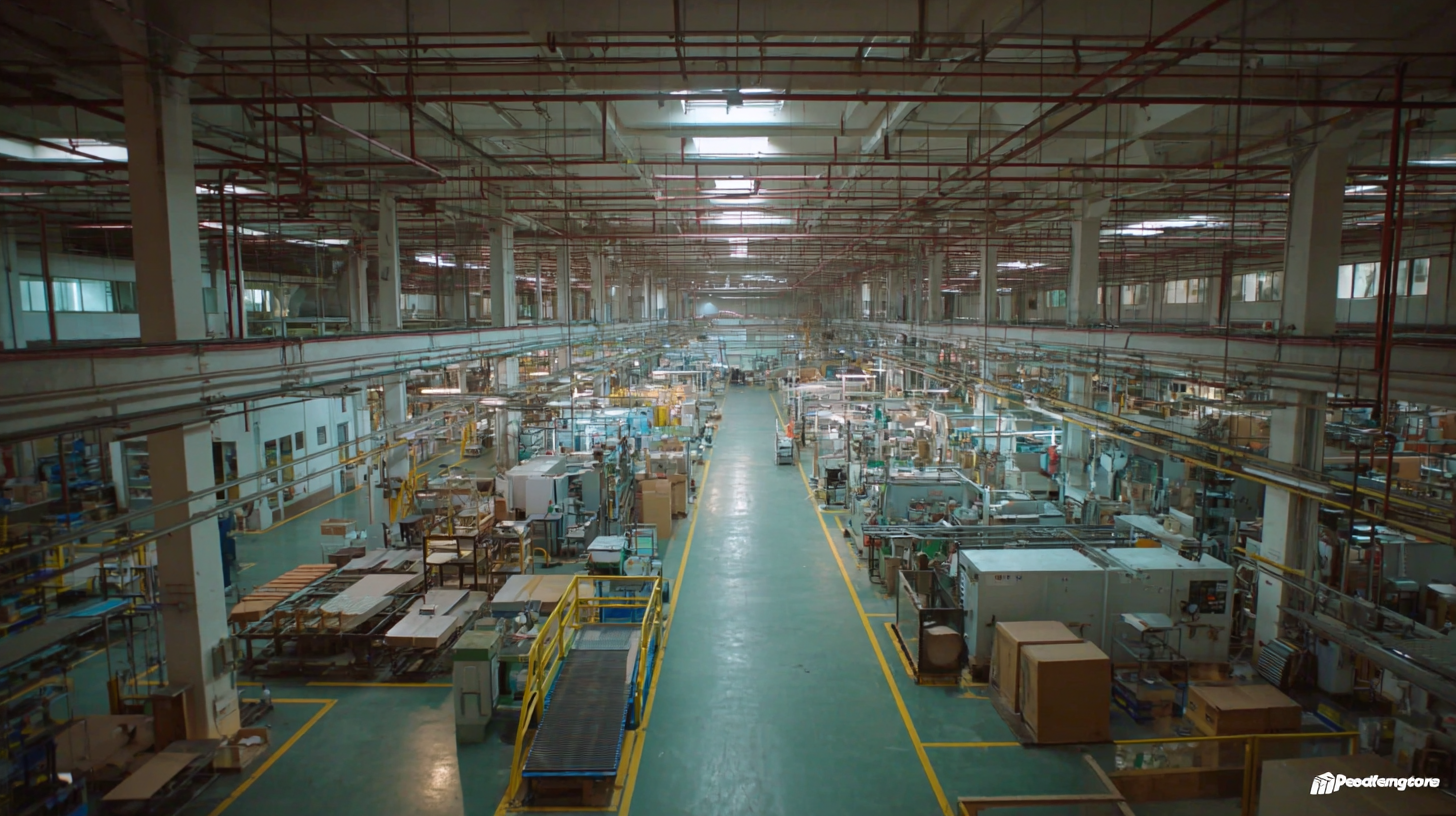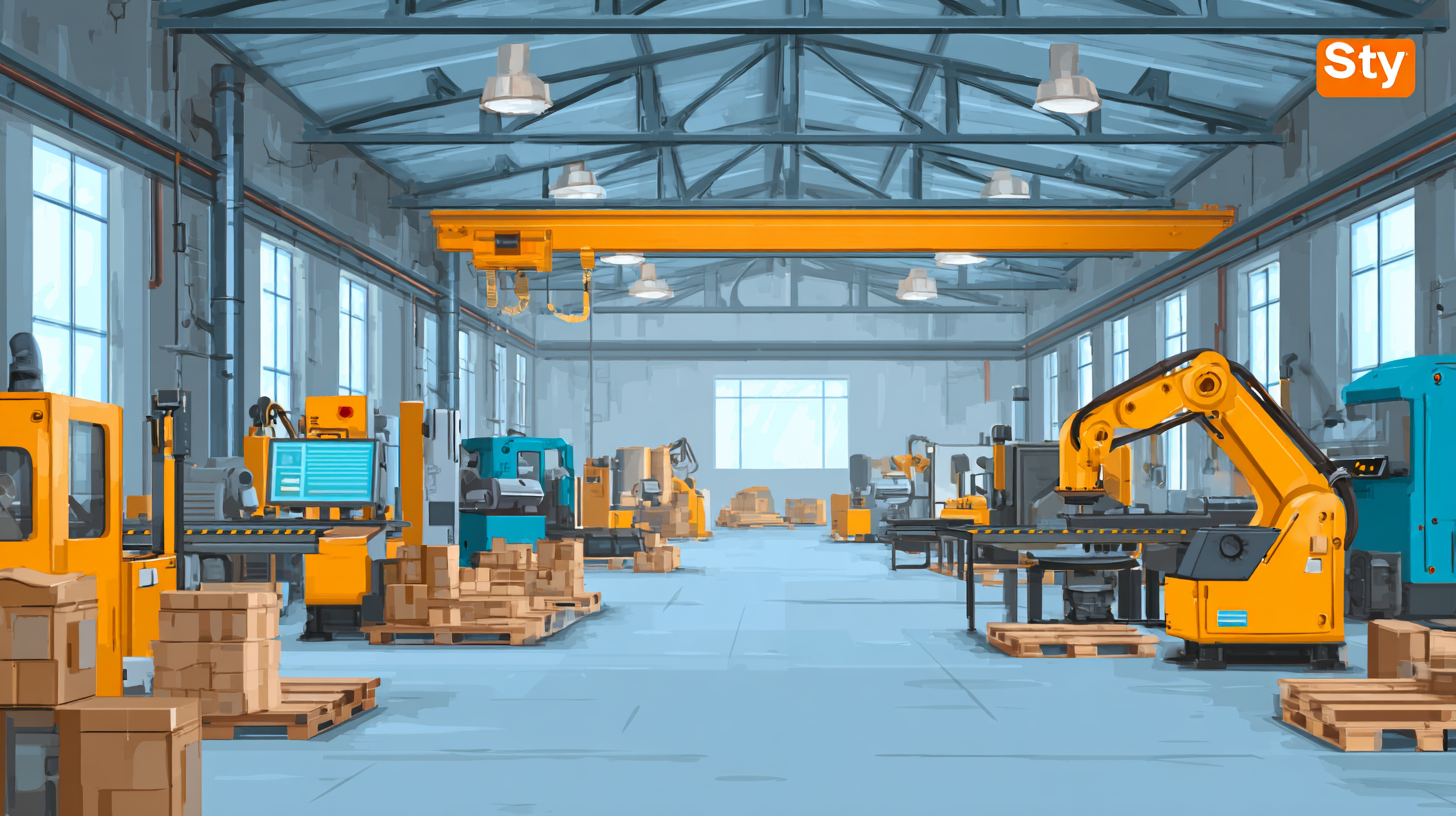
Ultimate Guide to Choosing the Best Factory for Your Manufacturing Needs
In an era where manufacturing is rapidly evolving, understanding how to choose the right factory for your production needs is crucial. According to a recent report by McKinsey & Company, 70% of manufacturers are prioritizing investment in advanced technologies by 2025, emphasizing the need for factories to adopt innovative solutions to remain competitive. As industries pivot towards automation and smart manufacturing, the right factory can significantly enhance efficiency, reduce costs, and foster sustainability. Key trends such as the integration of IoT, AI, and data analytics are reshaping the manufacturing landscape. This guide delves into the multifaceted process of selecting a factory, ensuring that businesses are well-equipped to navigate these technological advancements and leverage them for growth.

Benefits of After-Sales Service: Enhancing Customer Loyalty and Satisfaction
After-sales service is a critical component in building customer loyalty and satisfaction, particularly in the manufacturing sector. According to a report by Gartner, businesses that prioritize after-sales support can see an increase in customer retention rates by as much as 5%. This improvement translates into revenue boosts of 25% to 95% due to repeat purchases. By offering reliable support post-sale, manufacturers signal their commitment to quality and customer care, fostering trust and long-term relationships.
Additionally, providing effective after-sales service can significantly enhance product reliability perceptions among customers. A study from PwC revealed that 73% of respondents place high importance on a company's support options when making repeat purchases. This means that integrating robust support systems not only helps resolve issues efficiently but also enhances customers' overall product experience, ensuring they return to do business again.
**Tips:**
- Invest in training your customer service team to ensure they have the tools and knowledge to assist buyers effectively.
- Implement a customer feedback system to continuously improve your after-sales services and adapt to evolving customer needs.

Understanding Repair Costs: Analyzing Maintenance Expenses in Manufacturing
In today's manufacturing landscape, understanding and managing maintenance expenses is crucial for operational efficiency and cost-effectiveness. Repair costs can vary significantly, with estimates suggesting that machinery maintenance accounts for anywhere between 15% and 70% of the overall cost of goods produced. This variability underscores the necessity for manufacturers to adopt predictive and proactive maintenance strategies to mitigate unexpected downtime and associated losses.
Artificial intelligence (AI) is playing a transformative role in the maintenance of manufacturing equipment. By enabling remote monitoring and predictive analytics, AI technologies can identify potential defects before they result in equipment failure. Implementing advanced monitoring systems not only reduces unplanned downtime but can also enhance factory uptime by up to 15%. Manufacturers that invest in these technologies position themselves to respond better to maintenance needs, ultimately driving down long-term repair costs while improving productivity and operational resilience.
Ultimate Guide to Choosing the Best Factory for Your Manufacturing Needs - Understanding Repair Costs: Analyzing Maintenance Expenses in Manufacturing
| Factory Location | Average Monthly Maintenance Cost (USD) | Common Maintenance Issues | Repair Response Time (Hours) | Equipment Age (Years) |
|---|---|---|---|---|
| Factory A | 1200 | Hydraulic Issues, Electrical Faults | 4 | 5 |
| Factory B | 1500 | Conveyor Belt Malfunctions, Lubrication Failures | 3 | 10 |
| Factory C | 800 | Routine Maintenance, Minor Repairs | 24 | 3 |
| Factory D | 2000 | Pneumatic Failures, Calibration Issues | 6 | 7 |
| Factory E | 950 | Instrumentation Problems, Software Bugs | 12 | 4 |
Digital Transformations: How Technology Improves Factory Operations and Service
In the era of digital transformations, technology plays a pivotal role in enhancing factory operations and services. With advancements such as IoT, AI, and automation, factories can streamline processes, reduce downtime, and increase efficiency. For instance, utilizing smart sensors can provide real-time data on machinery performance, allowing for proactive maintenance rather than reactive approaches. This not only saves costs but also extends the lifespan of equipment.
Tip: Invest in integrated software solutions that enable seamless communication between departments. By breaking down silos, you facilitate better collaboration and faster decision-making, resulting in improved product quality and customer satisfaction.
Moreover, embracing digital twin technology can provide manufacturers with an accurate virtual representation of their physical operations. This helps in identifying bottlenecks and testing changes in a risk-free environment. As manufacturers adapt to changing market demands, leveraging such technology becomes critical for staying competitive.
Tip: Consider ongoing staff training in new technologies to ensure your team can fully utilize these advancements. A knowledgeable workforce is instrumental in maximizing the benefits of technological investments, leading to a more agile and responsive manufacturing environment.
Key Tips for Evaluating Manufacturing Partners: A Data-Driven Approach
When selecting a manufacturing partner, a data-driven approach can significantly enhance your decision-making process. Firstly, analyze the potential partner's production capabilities by assessing their technology and equipment. Request detailed information about their machinery and production methodologies. A factory that invests in advanced technology is likely to deliver higher quality products consistently.
Another key aspect is evaluating historical performance metrics. Examine the partner's past data on defect rates, delivery timeliness, and customer satisfaction. This information will provide insight into their reliability and operational efficiency. It's beneficial to request case studies or references from previous clients, as these can offer a clearer picture of the factory's performance over time.
Lastly, conduct a thorough financial assessment. Understanding a partner's financial stability can reveal their ability to handle large orders and adapt to unforeseen challenges. Analyze their financial statements and profitability trends to gauge their long-term viability. A financially robust manufacturing partner is more equipped to invest in necessary resources and sustain quality outputs.
Manufacturer Evaluation Criteria
The Role of Quality Control in Reducing Post-Manufacturing Efforts and Costs
 Quality control plays a pivotal role in the manufacturing process, significantly impacting both the efficiency of production and the overall cost-effectiveness of operations. According to a 2022 report by Deloitte, companies that implement rigorous quality control systems can reduce post-manufacturing costs by as much as 30%. This reduction stems from decreased returns, fewer defects, and minimized rework, all of which contribute to smoother operations and better resource allocation.
Quality control plays a pivotal role in the manufacturing process, significantly impacting both the efficiency of production and the overall cost-effectiveness of operations. According to a 2022 report by Deloitte, companies that implement rigorous quality control systems can reduce post-manufacturing costs by as much as 30%. This reduction stems from decreased returns, fewer defects, and minimized rework, all of which contribute to smoother operations and better resource allocation.
Moreover, as emphasized in a survey conducted by the American Society for Quality, nearly 78% of manufacturers reported that a strong quality control process facilitated faster time-to-market for their products. This accelerated pace not only enhances competitiveness but also fosters customer satisfaction by ensuring that high standards are met consistently. By investing in quality control, manufacturers can streamline processes, reduce waste, and ultimately increase the profitability of their operations, illustrating that the right factory partnership can lead to significant long-term financial benefits.
